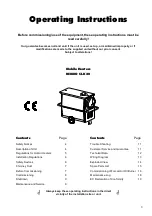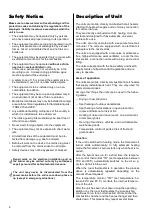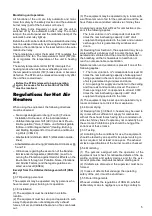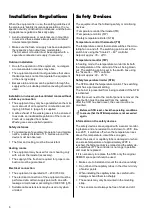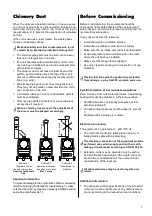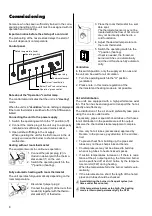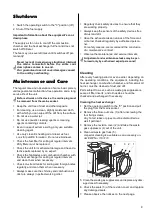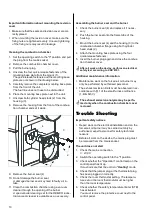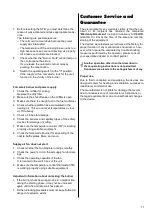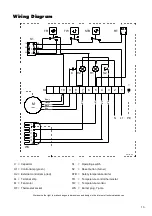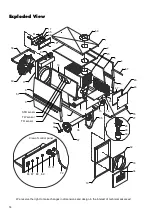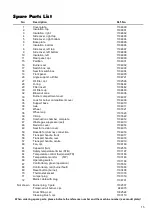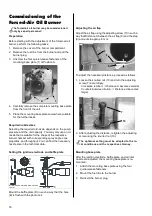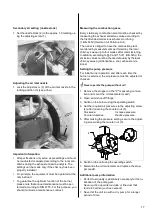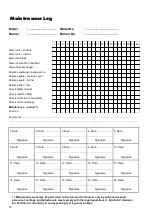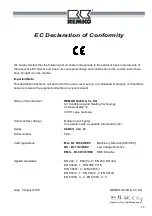
4
Safety Notices
Make sure to observe relevant local building and fire
protection codes and abide by the regulations of the
employers' liability insurance associations when the
unit is in use.
◊
The equipment may be operated only by persons
who have received proper training in its operation.
◊
The equipment must be set up and operated in such
a way that people are not endangered by exhaust
fumes, hot air, and radiated heat and no fires can
break out.
◊
The equipment may be operated only in rooms with
a sufficient amount of air for the combustion.
◊
The equipment may be operated without a chim-
ney duct in well-ventilated rooms.
In this case, people may not constantly be in the
mounting room. Corresponding prohibition signs
must be posted at the entryways.
◊
A safety zone of 1.5 m around the equipment is to
be maintained, even for non-flammable objects.
◊
The equipment is to be installed only on a non-
combustible foundation.
◊
The equipment may be set up and operated only in
an environment not at risk of fire or explosion.
◊
Mobile fuel containers may only be installed in compli-
ance with technical regulations for flammable liquids
“TRBF 210 and 280”.
◊
Any additional building ordinances of the country in
which it is installed are to be observed.
◊
The intake guard grille must always be kept free of
dirt and loose objects.
◊
Never insert foreign objects into the equipment.
◊
The equipment may not be exposed to direct water
jets.
◊
All electrical lines of the equipment must be pro-
tected from damage (e.g. due to animals).
◊
Before all work on the device, the mains plug must
be removed from the mains socket on principle.
◊
Safety devices may not be bypassed or blocked.
Description of Unit
The units are mobile, directly combusted hot air heaters
(HAH) with heat exchangers and a chimney connection
for commercial use.
They are directly combusted with EL heating oil or die-
sel fuel and designed for fully automatic, universal,
problem-free use.
The units are only operated with a separate forced-air
oil burner. The units are equipped with an electrical oil
preheater via the nozzle stock.
The units are equipped with a low-noise, maintenance-
free, high-performance axial ventilator, a room thermo-
stat socket, a connection cable with a plug, and a drum
fitting.
The units correspond with the basic safety and health
requirements of all pertinent EU regulations and are
easy to operate.
Areas of application
The units are mobile, directly combustible hot air heaters
that supply instantaneous heat. They are only used for
commercial purposes.
Among other things, the units can be used in the follow-
ing areas:
−
Drying of new structures
−
Spot heating of outdoor workstations
−
Spot heating of workstations in open production
rooms and halls not at risk of fire
−
Heating of closed and open rooms, on a permanent
or temporary basis
−
De-icing of machines, vehicles, and non-flammable
warehouse goods
−
Temperature control of parts at risk of frost and
greenhouses
Function
If the unit is switched to heating mode, the forced-air oil
burner starts automatically. In fully automatic heating
mode, the forced-air oil burner starts only when heat is re-
quired.
After the burner has run for a short time, the tempera-
ture control thermostat "TR" (set temperature between
35°C and 40°C) automatically switches on the air su p-
ply fan. Hot air is blown out.
When the room thermostat is in operation, the process
above is automatically repeated depending on the
amount of heat required.
The temperature monitor "TW" (set temperature be-
tween 80°C and 85 °C) monitors the internal tempera -
ture of the unit.
After the unit has been shut down using the operating
switch or by the room thermostats, the air supply fan
continues to run for a certain period of time to cool the
combustion chamber and the heat exchanger and then
shuts down. This process may repeat several times.
The unit may never be disconnected from the
power mains before the entire cool-down phase is
up (except in emergency situations).
Repair work on the electrical installation and on
the burner may be carried out only by authorised,
expert personnel for safety-technical reasons.
Summary of Contents for CLK 20
Page 2: ......



